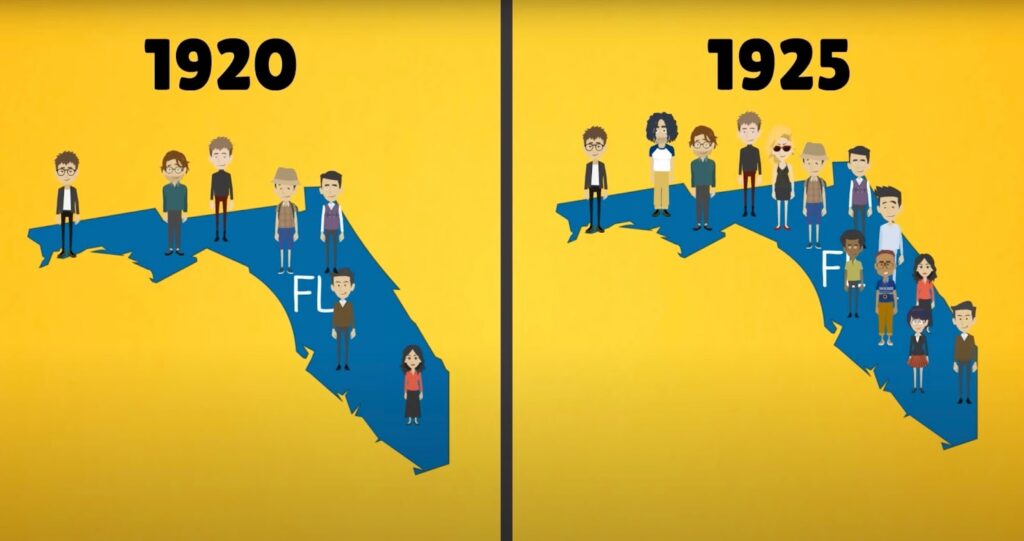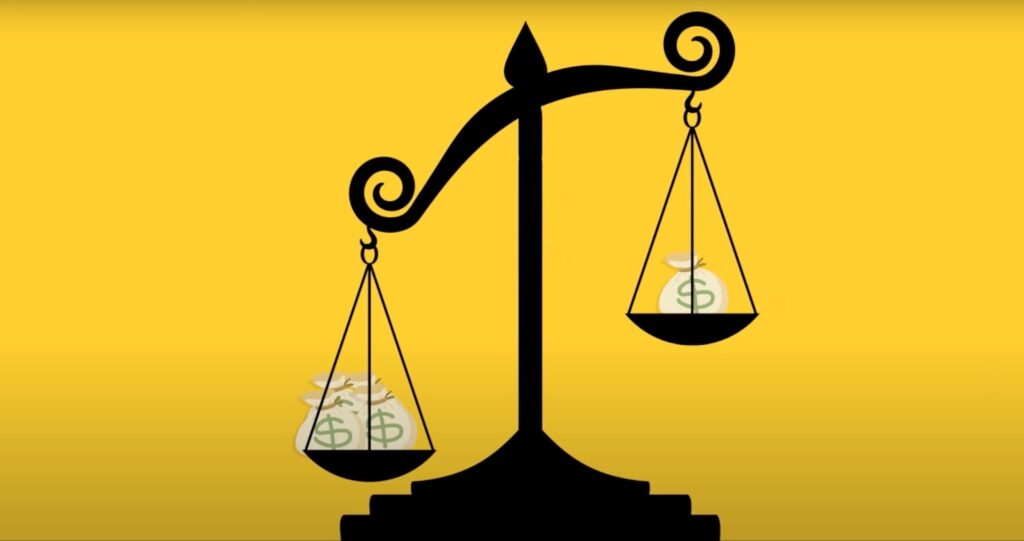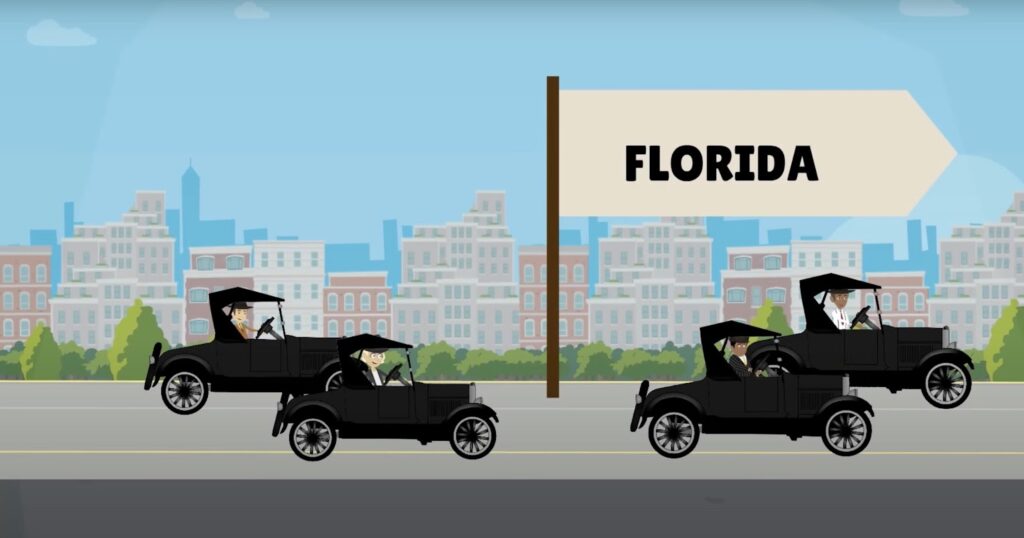The 1920’s were a time of great economic and social change in America. It was a decade marked by prosperity, materialism, and the rise of consumer culture. And at the center of it all was Florida, the Sunshine State that captured the imagination of millions of Americans. The Florida land boom of the 1920’s was one of the greatest economic and social phenomena in American history, forever changing the global image of the state. In this article, we will explore the factors that contributed to the boom, the impact it had on Florida, and the eventual bust that followed.
The Great Florida Land Boom
The Florida land boom of the 1920’s was a period of intense real estate speculation and development. It began in 1921 and lasted until 1926, with its peak in 1925. During this time, hundreds of thousands of Americans from all walks of life flocked to Florida in search of wealth and opportunity. The boom was fueled by two important elements: the availability of time and money for Americans, and the rise of the automobile.
For the first time, Americans had the luxury of paid vacations, pensions, and fringe benefits, thanks to the welfare capitalism of the time. This meant that they had both the time and the money to travel to Florida and invest in real estate. Additionally, the widespread ownership of automobiles allowed people to easily travel to Florida, making it a popular destination for middle-class families.
The allure of Florida was further enhanced by the materialism and prosperity of the times. The idea that anyone could become rich by investing in the right property was deeply ingrained in the American psyche. And Florida, with its sunny weather, beautiful beaches, and seemingly endless opportunities, appeared to be the perfect place to make a fortune.

The Money Migration
The influx of people into Florida during the land boom was known as the “money migration.” People from all over the country, and even from other parts of the world, flocked to the state in search of wealth and prosperity. This migration had a significant impact on the demographics and economy of Florida.
One of the major effects of the money migration was the rise of the middle class in Florida. The majority of the migrants were middle-class families looking for a better life. They brought with them their skills, education, and work ethic, which helped to transform Florida from an agricultural state to a more diverse and modern economy.
The money migration also led to a surge in real estate development. Land developers saw the potential for profit and began buying up large tracts of land, dividing them into smaller lots, and selling them at inflated prices. This created a frenzy of buying and selling, with people hoping to get in on the action and make a quick profit.
A Cooperative Government
The Florida government played a crucial role in the land boom by creating a cooperative environment for developers. In 1923, the state legislature passed the “Florida Land Sales Act,” which allowed developers to sell land without having to register with the state. This made it easier for developers to market their properties and attract buyers.
The state government also invested heavily in infrastructure, such as roads, bridges, and public utilities, to support the growing population. This further fueled the land boom, as it made it easier for people to access and develop land in Florida.
Binder Boys and Real Estate
One of the most notorious aspects of the Florida land boom was the presence of “binder boys.” These were young men who worked for land developers, going door-to-door and convincing people to put down deposits on land that was yet to be developed. They would collect a small percentage of the deposit as their commission, and the rest would go to the developer.
Binder boys were often seen as con artists, using high-pressure sales tactics and making false promises to convince people to buy land. Many of them had no real estate experience or knowledge, but they were able to make a lot of money during the boom. However, when the bust came, many of them were left with nothing.
Florida Politics in the Boom
The Florida land boom also had a significant impact on politics in the state. The influx of new residents, along with the rise of real estate developers, led to a shift in power and influence. In 1924, the Democratic Party, which had been in control for decades, lost its majority in the state legislature to the Republican Party.
The Republican Party was seen as more favorable towards business and development, and this appealed to the land developers who were looking to expand their operations. As a result, the government became more cooperative and supportive of the real estate industry, further fueling the land boom.
The Land Developers – Kings of The 1920’s
During the land boom, land developers were seen as the kings of Florida. They were the ones who controlled the supply of land and set the prices. Some of the most prominent developers of the time included George Merrick, who developed Coral Gables, and Carl Fisher, who developed Miami Beach.
These developers were known for their extravagant lifestyles and lavish spending. They built grand mansions, hosted lavish parties, and lived a life of luxury. However, their success was short-lived, as the land boom eventually came crashing down.
Events and Warnings
Despite the rapid growth and prosperity, there were warning signs that the Florida land boom was not sustainable. In 1925, the Miami Herald published an article titled “Miami Real Estate: A Bubble About to Burst?” which warned of the dangers of speculation and overdevelopment. However, this warning was largely ignored, and the boom continued.
In 1926, a major hurricane hit Miami, causing significant damage and loss of life. This was seen as a temporary setback, and the land boom continued. However, it was a sign of things to come, as the hurricane season of 1928 would prove to be even more devastating.
The Tin Canners
Another aspect of the Florida land boom was the rise of “tin canners.” These were people who came to Florida with the intention of buying cheap land and then reselling it at a higher price. They often used deceptive tactics, such as burying tin cans on the land to make it appear more valuable.
Tin canners were not interested in developing the land or contributing to the growth of Florida. They were simply looking to make a quick profit and move on to the next opportunity. Their actions further inflated land prices and contributed to the eventual bust.
Prohibition Days
The Prohibition era also played a role in the Florida land boom. With alcohol being illegal in many parts of the country, Florida became a popular destination for bootleggers and speakeasies. This brought in a lot of money and created a sense of excitement and glamour around the state.
However, the illegal activities also attracted organized crime, which had a negative impact on the reputation of Florida. The presence of gangsters and their illegal activities added to the perception that Florida was a lawless and corrupt place, which made some potential investors hesitant to buy land.

The Muck Bowl
One of the most infamous events of the Florida land boom was the “Muck Bowl.” In 1925, a group of real estate developers organized a football game between the University of Florida and the University of Miami to promote the development of the Miami area. The game was played on a field that had been cleared from the Everglades, known as “the muck.”
The game was a disaster, with players slipping and sliding in the mud and the stands collapsing due to overcrowding. It was seen as a symbol of the reckless and chaotic nature of the land boom, and it further damaged the reputation of Florida.
The Great Florida Land Bust
By 1926, the Florida land boom was beginning to show signs of slowing down. Land prices had reached unsustainable levels, and there were fewer buyers willing to invest. In September of that year, the Miami Herald published an article titled “Miami Real Estate: A Bubble Pops,” which signaled the beginning of the end for the boom.
In 1927, the state legislature passed the “Florida Land Sales Act of 1927,” which required developers to register their properties with the state and provide detailed information about the land. This led to a decline in sales and a drop in land prices.
The Hurricane of 1928
The final blow to the Florida land boom came in 1928 when a major hurricane hit the state, causing widespread destruction and loss of life. The hurricane destroyed many of the newly developed areas, leaving investors with nothing but worthless land. This event marked the end of the land boom and the beginning of the Great Depression, which would have a lasting impact on the state of Florida.
Conquistador Florida: A Historical Perspective
To comprehend the Florida land boom fully, one must consider the rich historical tapestry that spans centuries. Florida’s allure has beckoned explorers, settlers, and dreamers alike since the early days of Spanish colonization. The legacy of the conquistadors, who sought gold and riches, casts a long shadow over Florida’s history.
As the land boom surged in the 1920s, echoes of the conquistadors’ quest for prosperity reverberated through time. Just as the conquistadors ventured into uncharted territory, so too did the aspiring landowners of the 1920s stake their claims in a Florida ripe with promise.
Conclusion
The Florida land boom of the 1920’s was a period of great excitement and prosperity, but it was also marked by greed, speculation, and overdevelopment. The influx of people and money forever changed the landscape and economy of Florida, but it also left a legacy of failed dreams and broken promises. The bust that followed showed the dangers of unchecked growth and the importance of responsible development. Today, Florida continues to be a popular destination for tourists and investors, but the lessons of the land boom and bust of the 1920’s continue to shape the state’s development.
